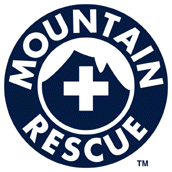By Molly Williams, Meridian Editor
At the summer business meeting in Salt Lake City, Utah, the Mountain Rescue Association board approved a proposal to change the organization’s bylaws, which were first written more than 60 years ago. The major revision in the proposal reduced the board from 71 to 12 members. This option was recommended by outside legal counsel and voted on by the existing larger board during the meeting, passing with the required two-thirds approval. All 12 directors have now been elected and are serving.
The impetus to have a smaller board was to make the board more effective and more engaged, which is important to satisfy the legal duty that board members have, said David Lawson, the outside legal counsel that reviewed the bylaws and made the recommendation. “It’s very difficult with a board (of more than) 25-30 people to ensure that everyone is engaged at the level required to satisfy the duty of care,” Lawson said. “A big board is a very difficult thing to run.” Additionally, it was important to distinguish between a membership meeting and a board meeting to be in compliance with recent changes in non-profit laws.
Previously, each regular MRA team held a seat on the board, for a board with 71 voting members. Going forward the board will be the President, Vice President, Treasurer and one representative elected from each of the nine regions in the MRA. Region Directors will serve terms of one year beginning at the annual membership meeting. The discussion at the meeting in Salt Lake City was robust and, at times, contentious.
The alterations to the bylaws was in response to a 2021 change to laws covering non-profits in the state of Washington, where the MRA is incorporated. It was determined that the MRA was out of compliance on several issues including proxy voting at board meetings, failing to hold “membership meetings,” and missing language allowing remote participation in meetings. The officers at the time decided to have the bylaws reviewed by a lawyer and engaged Lawson, a partner at Perkins Coie LLC in Seattle in late 2022.
Over the course of several business meetings in 2023 and early 2024, there were deliberations about how to address these issues. There was discussion about adopting all the suggestions from the lawyer, taking more time to develop choices and determine the MRA’s own best practices or doing the minimum necessary to come into compliance with the 2021 law. A bylaws committee was appointed and tasked with coming up with a plan. Members of that committee included Chris Ruch, Cora Findley, Christine Davis, Ken Davies and Shaun Roundy. Additional contributions were made by attorneys Lawson and Casey Bruner.
At the business meeting in June, there were three proposals for the membership to consider, including one from three past presidents. All the proposals made necessary changes in the bylaws to come into compliance with the law with regard to proxies and other issues, but addressed the board structure in different ways. The first proposal established an annual membership meeting and replaced the five-person Officers Committee, which had all the authority of the board between summer and winter meetings, with a 12-member board. The other two proposals kept the larger board while making other changes.
The new 12-member board has three members elected by the membership as a whole – President, Vice President and Treasurer – as well as a member elected by each of the regions. This was a spirited discussion and there was concern that it was a big change for the organization and could diminish the power of the teams.
There also was concern that larger regions like California, which has 23 teams, would not have a proportionate presence on the board. This issue was discussed at both the winter meeting and in the bylaws committee meeting, but newly elected Vice President Chris Ruch said that while it was a valid concern, the membership and board did not feel it was an overriding one.
“We are moving from a 5-member Officers Committee to a 12-member Board,” said Ruch, who chaired the bylaws committee. “So what we are getting is a more diverse group of people that represent the entirety of the MRA. A smaller board can be more engaged and provide more oversight, while all MRA teams are still represented at the annual Membership meeting.” With the approval of the proposal, the remaining two proposals, which both kept the larger 71-person board, were not discussed.
Changes to the MRA’s bylaws have been made several times since they were first written in 1959, but no changes had been made in the past 25 years, Ruch said. The board will be responsible for all the business and primary decision making for the MRA, including policy changes, oversight of officers and committee chairs, and budgeting and finance. The membership will elect the president, vice president and treasurer, admit new member teams, terminate teams, amend the Articles of Incorporation and Bylaws, and can dissolve the organization.
All the regions have now held their elections and the following is the list of the Region Directors of the MRA.
Appalachian – Bill Campbell, Appalachia Mountain Rescue
Washington – Chris Mears, Central Washington Mountain Rescue
California- Antonio Arizo – Ventura County SAR
Alaska -Jonathan Bryan, Alaska Mountain Rescue Group
Oregon – Trent Volz, Deschutes County SAR
Desert Mountain – Justin Bern, Central Arizona Mountain Rescue Association
Rocky Mountain – Jack Mitchell, Atalaya SAR
Inter-mountain – Steve Petty, Davis County SAR
Canada – Sheldon Mehlhaff, Rocky Mountain House SAR



